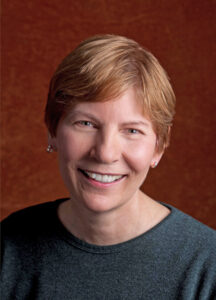By Kathy Berken
Do you remember the old ‘50s TV show “Who Do You Trust?” with Johnny Carson? Three couples competed for prizes when Carson asked the husband if he wanted to answer the question himself or if he could trust his wife to do so. Of course, the setup implied that a woman might not be trusted, so there was that. Ultimately, we had to ask ourselves, who do we trust? And what might keep us from trusting? One factor is fear.

In “The Taste of Silence,” author Bieke Vandekerckhove says that of these “demons”— sadness, anger and fear — fear is the hardest to overcome.
Sadness can be lessened through our cathartic tears and grief work. Anger — although a secondary emotion rising from helplessness, frustration, rejection or other emotional injury — can be confronted headlong by identifying the underlying cause and dealing with it.
Fear is different, Vandekerckhove says. Fear arises from the potential to be hurt, and there is no direct way to express our fear in order to heal. So, how can we begin to trust if we can’t work with it as we do sadness and anger?
Let’s first distinguish healthy from unhealthy fear. It’s good for our safety to be instinctively afraid of standing at the edge of the Grand Canyon. If your gut signals danger, then pay attention and do what it takes to be safe. I don’t take walks alone after dark in unknown areas and I don’t climb trees anymore. On the other hand, unhealthy fear is not based on instinct and it does not serve us. In fact, it can paralyze us and cause depression and illness.
Unhealthy fears are irrational phobias that block our abilities to trust. My irrational fears include traveling alone to unfamiliar places because I have a terrible sense of direction and do not like the feeling of being lost. I travel anyway, knowing that I might still get lost, but I am better at asking strangers for help, which increases my trust levels.
Can it be that easy? Just do it anyway? Well, in a sense, yes. According to the BBC’s Science Focus, these steps can help: 1. Identify your fear. 2. Understand it. 3. Take action. 4. Work gradually.
With my fear of getting lost, my family and friends know that I am “direction deficient.” My son even gave me a sign that read, “Getting lost can be an adventure!” Except when you needed to be somewhere an hour ago! Once I identified my fear and understood where it came from, I faced it, and began to put one foot in front of the other. I’m so much better now.
But what should we do when our inability to trust comes from a place of deep hurt, such as a betrayal, rejection, bullying or abuse? When our fear runs so deep, we are emotionally paralyzed, feel depressed and develop illnesses around the stress. Where do we start?
Father Ron Rolheiser says that sometimes, we have to sit with it. “Fear can only be suffered,” he says. “We have to live with it until it recedes on its own. Sometimes, as the Book of Lamentations suggests, all we can do is put our mouths to the dust and wait. With fear, sometimes all we can do is endure.” I think this is a first step. Just drop into it, feel the pain, ask God for clarity about what to do next, then begin with the four steps above.
At this point, brutal honesty may be the best route. Do we trust God to help us, or not? If not, admit the truth and then find a good spiritual director and/or counselor to talk to. If it’s yes, then we have already begun to heal and can take the steps necessary to get there.
(Kathy Berken is a spiritual director and retreat leader in St. Paul, Minnesota. She lived and worked at The Arch, L’Arche in Clinton (1999-2009) and is author of “Walking on a Rolling Deck: Life on the Ark (stories from The Arch.)











